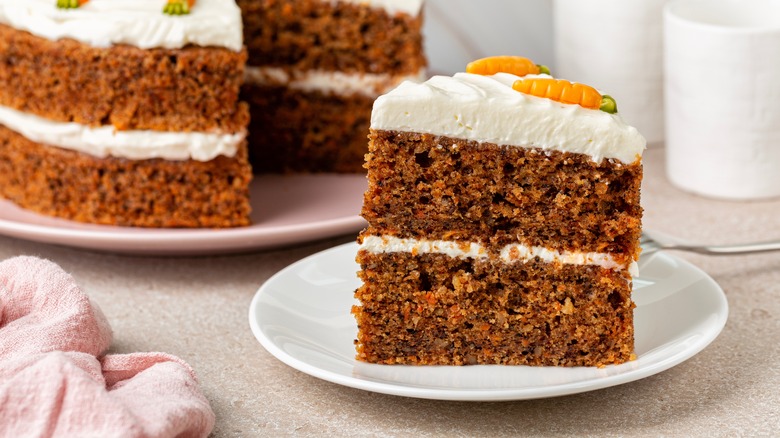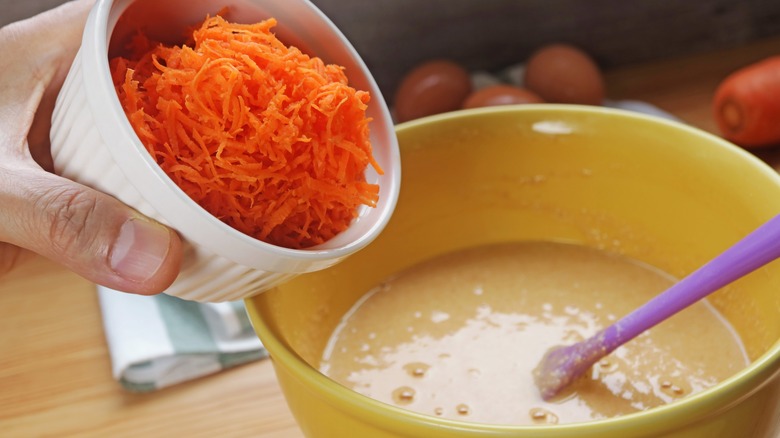Achieve The Perfect Carrot Cake Texture With This Simple Tip
Vegetables and dessert don't have to be at odds, and no dish proves that better than the timeless classic carrot cake. Striking a harmonious balance between warm spices, rich cream cheese frosting, and the natural sweetness of carrots, there's a reason this decadent dessert will never go out of style. The key to an impeccable carrot cake is achieving an airy and delicate texture, which can often be a challenge for home bakers. Even if you employ the hand-grating technique that is Ina Garten's secret to a perfect carrot cake, you might still end up with a heavy and tough dessert because of one simple mistake: overmixing the batter. To learn how to avoid this common cake-baking error, Food Republic spoke to Laura Kanya, the research and development chef at Ann Clark.
"Carrot cake is typically a denser cake," says Kanya. "It ... relies on a chemical leavener in the batter to give it lift and tenderness, although it does contain some eggs for a binder and slight lift." She notes that unlike chiffon or angel food cakes that rely on well-beaten egg whites to create a cloudlike structure, carrot cake batter requires far less mixing to achieve its signature texture. In fact, excessive mixing will overdevelop the gluten in your cake, causing it to be dry and tough. "It is important to just mix the batter until you see a bit of flour," Kanya says, "then add in the carrots, nuts and raisins until just combined."
How to avoid overmixing a carrot cake
As with all baked goods, knowing the proper order of operations for combining wet and dry ingredients is crucial to nailing the texture of your carrot cake. While it may seem like a shortcut to dump the carrots, nuts, and other items into the bowl all at once, Laura Kanya prefers "to add the inclusions later so that flour does not coat them, changing the aesthetic." Whisking together dry items (excluding the carrots and nuts) in one bowl and wet ones in another is the key to avoiding lumpy batter, which many bakers try to smooth out with excessive mixing. Accidental overmixing can also happen easily when using an electric hand or stand mixer. To circumvent this common mistake, chef Kanya recommends going old school.
"I find mixing by hand gives you more control," she says. "I use a rubber spatula and gently fold the dry ingredients at once into the wet ingredients." This method is the best way to avoid overmixing by requiring you to pay closer attention to the process. "Of course if you are making larger batches, you can use a mixer with a paddle attachment," Kanya adds. "Just watch closely after you add the flour." She also suggests holding off on the carrots and nuts until just before the wet and dry ingredients have been completely combined, waiting until the ingredients are ¾ mixed and "you can still see [a] small amount of flour."


